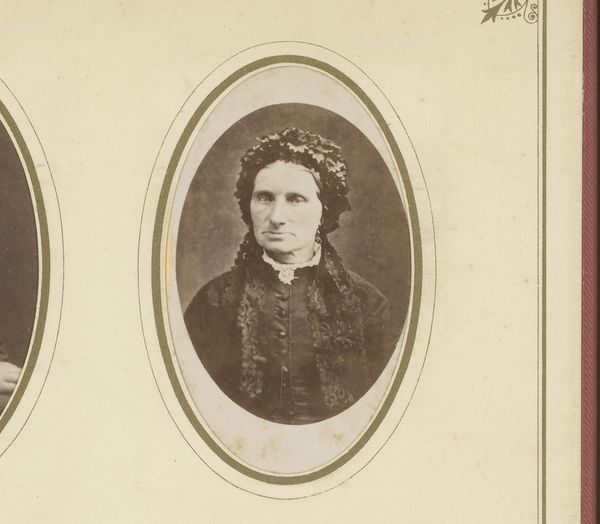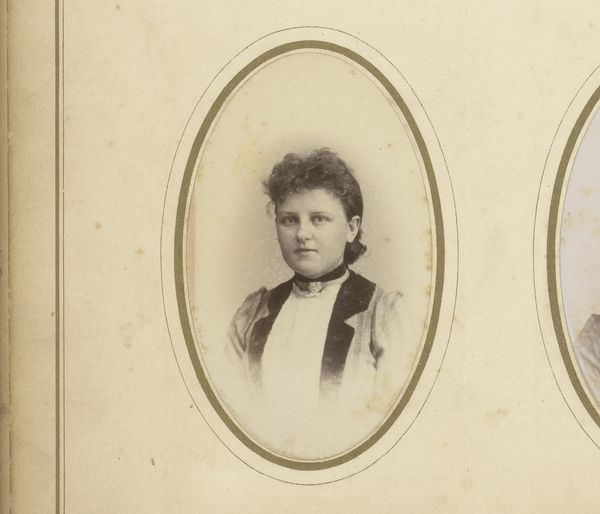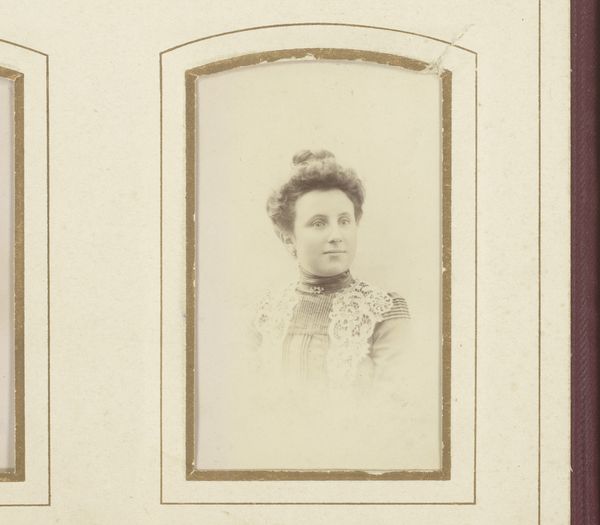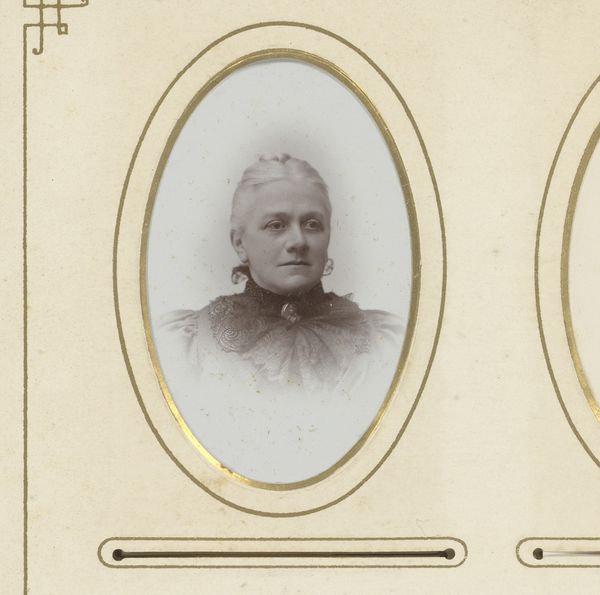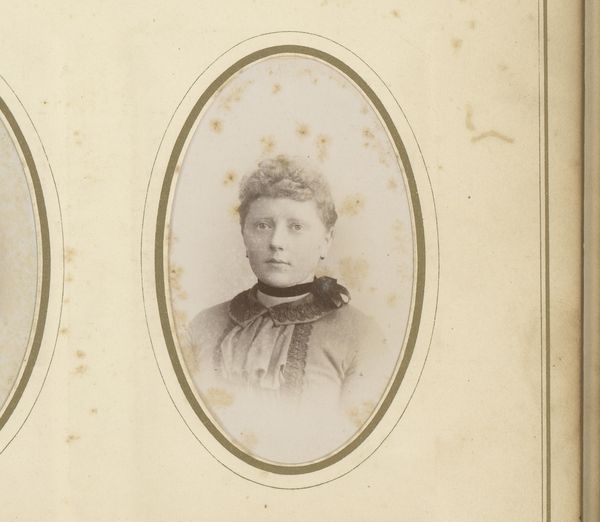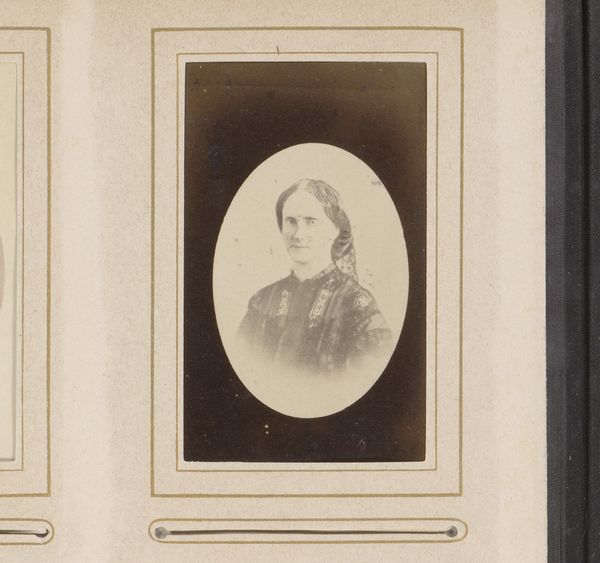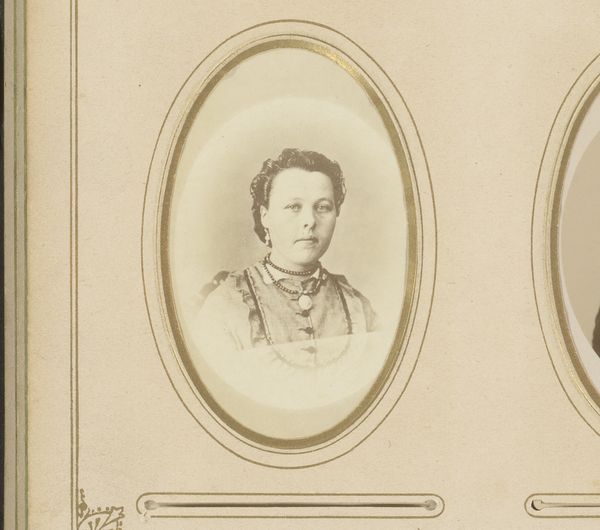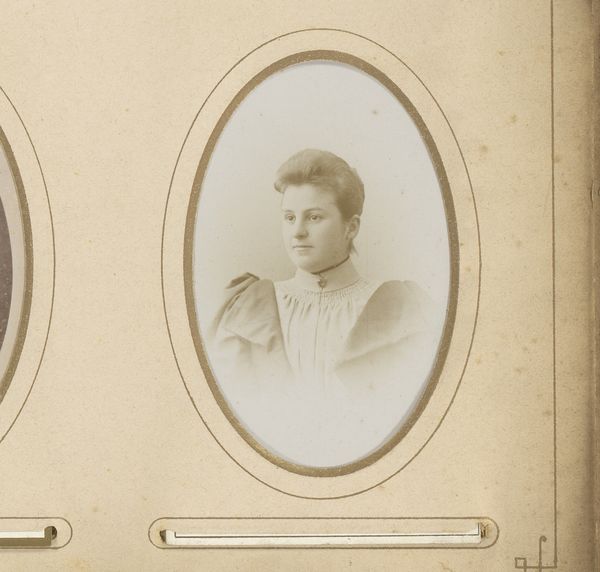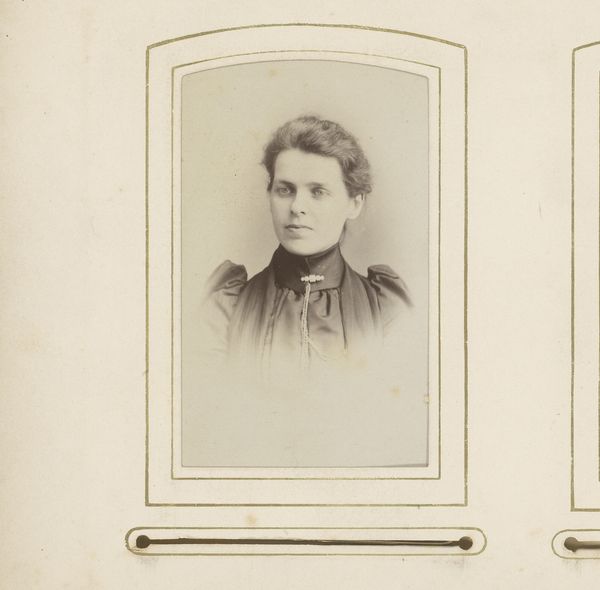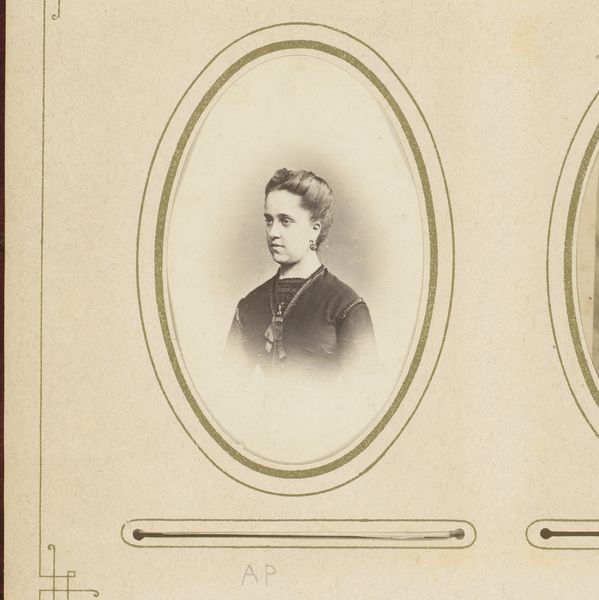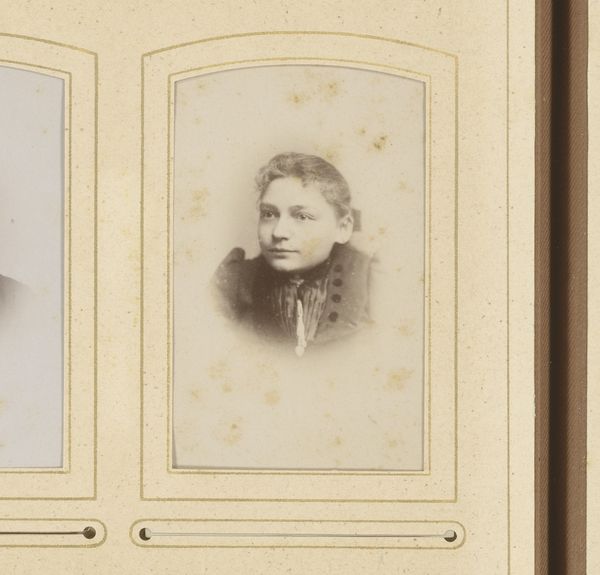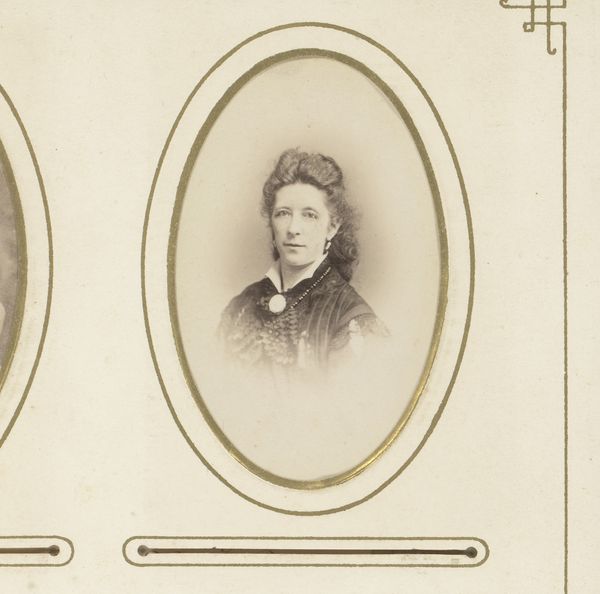
photography, albumen-print
#
portrait
#
charcoal drawing
#
photography
#
photojournalism
#
albumen-print
#
realism
Dimensions: height 87 mm, width 53 mm
Copyright: Rijks Museum: Open Domain
Editor: This is "Portret van een vrouw", or Portrait of a Woman, made between 1895 and 1917, using the albumen print process of photography. It has such a delicate feel to it, like a cherished keepsake. What catches your eye about it? Curator: It's the materiality that truly captivates me. This albumen print, derived from egg whites, meticulously coated onto paper – it speaks of a particular social context, a time when photographic portraiture was becoming increasingly accessible, yet remained a carefully considered process. Note the choices around framing and the woman's attire; how might the production and consumption of these objects reinforced specific class distinctions, for instance? Editor: That's interesting. I hadn't considered the class element so explicitly. The ornate brooch at her collar and the somewhat formal pose does give an air of deliberate status, but how does that fit with photojournalism? It feels staged. Curator: Well, is it? Let’s question that easy classification. The very act of producing the albumen print, the labour involved, connects this portrait to the burgeoning field of commercial photography and the workers within. While styled and perhaps posed, we must think of its reach, where it lands in an album, in someone’s parlour… consider this “realism” not just aesthetically, but functionally, and the image's means of reaching wider society, like journalism does. What do we know of where and by whom this photograph was produced and used? Editor: Not much, but that makes me consider its purpose differently. Not simply documenting appearance but circulating identity in a constructed manner. I like that. Curator: Exactly! Examining these material processes invites questions of labor, skill, and distribution - how these inform not only aesthetic choices but our understanding of the image's socio-historical significance. Editor: I will definitely look closer at the process of creation in my next art encounter. Thanks!
Comments
No comments
Be the first to comment and join the conversation on the ultimate creative platform.
